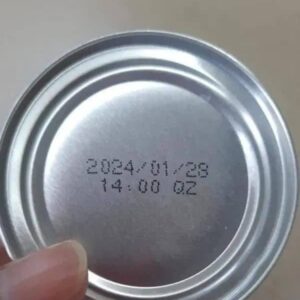The Dilemma of Moldy Bread: Should You Eat It?
We’ve all experienced the unpleasant surprise of mold on bread. It’s easy to wonder if you can simply cut off the moldy part and eat the rest. While it may seem wasteful, it’s essential to consider the health risks before making that decision.
What Is Mold and How Does It Grow?
Mold is a fungus that thrives in warm, damp environments. It spreads by releasing spores into the air. When these spores land on food, they begin to grow, especially on bread, which provides moisture and nutrients. Mold spreads quickly, often beyond what is visible.
Common Mold Types on Bread
Common molds on bread include Penicillium, Aspergillus, Rhizopus, and Cladosporium. These molds appear in different colors, such as green, white, black, or blue. Some molds are harmless, but others produce mycotoxins, which can be toxic if consumed.
Health Risks of Eating Moldy Bread
Consuming moldy bread can cause allergic reactions or respiratory issues. Symptoms may include nausea, vomiting, or diarrhea. In rare cases, mycotoxins can lead to severe complications, especially for those with weakened immune systems.
Can You Cut Off Mold and Eat the Rest?
It may seem like a good idea to cut away the moldy part, but this is not recommended. Mold can penetrate deeper into the bread, and spores can spread throughout the loaf. Even if you remove the visible mold, the rest of the bread may still be contaminated.
Expert Advice on Moldy Bread
Food safety experts, including those from the USDA and FDA, strongly advise against eating moldy bread. They emphasize that the risks of consuming mold outweigh the benefits of saving it. The safest option is to discard the entire loaf.
Alternatives to Eating Moldy Bread
If you don’t want to throw away moldy bread, consider non-food uses. You can compost it, which is eco-friendly. Alternatively, mold-free sections can be used for bird feed, but make sure the mold is not harmful to birds.
Preventing Mold Growth on Bread
To avoid mold, store bread in a cool, dry place. Refrigerating or freezing bread can extend its shelf life. Using airtight containers or bread boxes can help reduce moisture exposure. Buying smaller quantities of bread will also help prevent waste.
Conclusion: Prioritize Your Health
While it may seem wasteful to toss moldy bread, the potential health risks are not worth the risk. By understanding how mold grows and taking steps to prevent it, you can minimize the chances of encountering this issue. Always choose health and safety when deciding what to consume.
Related Posts
Der beeindruckende Chicken Road Walzenspiel unabhängig analysiert
In der Kategorie der Online-Slots fällt Chicken Road positiv auf. Das richtige chicken road casino zu finden, lohnt sich. Der Automat kombiniert klassische Elemente mit modernen Funktionen….

My beautiful son, the light of my life, has chosen to end his earthly struggle today and is now with God
“Love you, Dad.”That was the message. No warning. No explanation. Just three ordinary words that became extraordinary in their finality. When the news followed, a family was…

📅 What You Should Know About Food Expiration Dates — Don’t Toss Perfectly Good Food
The Truth About Expiration Dates: Stop Tossing Perfectly Good Food Most people assume “expired” means unsafe. That’s a myth. In reality, only infant formula is legally required to carry…
weverydaystoriesweverydaystories
weverydaystoriesweverydaystoriesweverydaystoriesweverydaystoriesweverydaystoriesweverydaystoriesweverydaystoriesweverydaystories

The Real Reason Ronald McDonald Is No Longer the Face of McDonald’s
Why Ronald McDonald Quietly Disappeared For decades, Ronald McDonald stood as one of the most recognizable faces in fast food. Today, however, the iconic clown has largely…

Seven Dollars and a Promise: Angels in Leather
A Late-Night Visitor At a quiet Denny’s, the Thunder Road Veterans Motorcycle Club was enjoying coffee and sharing stories. Suddenly, a small boy named Tyler approached their…